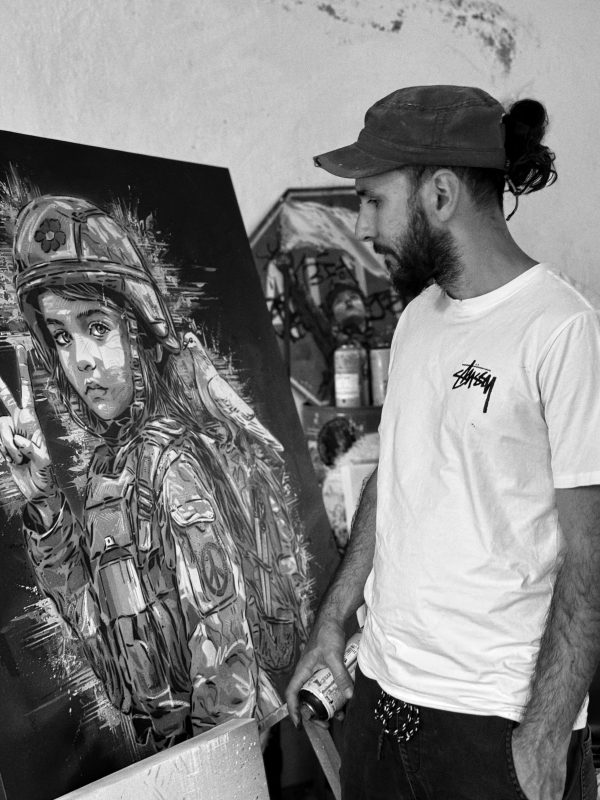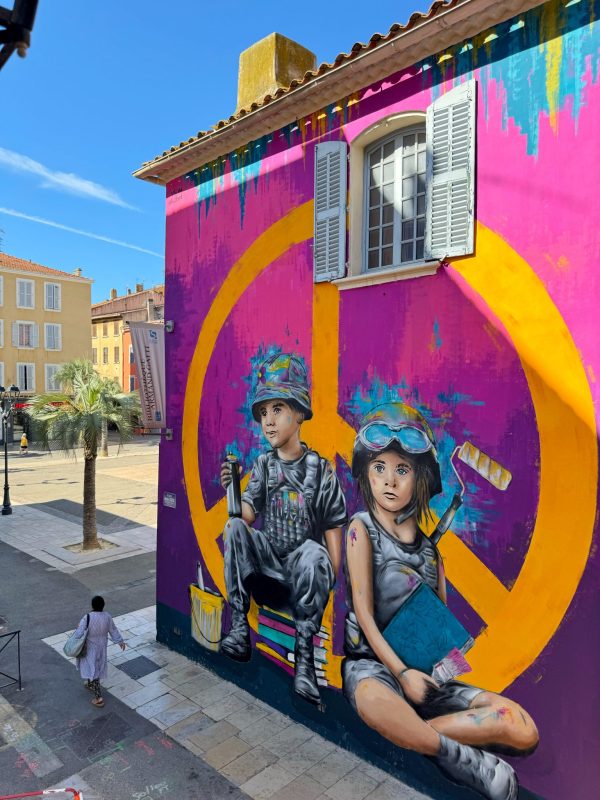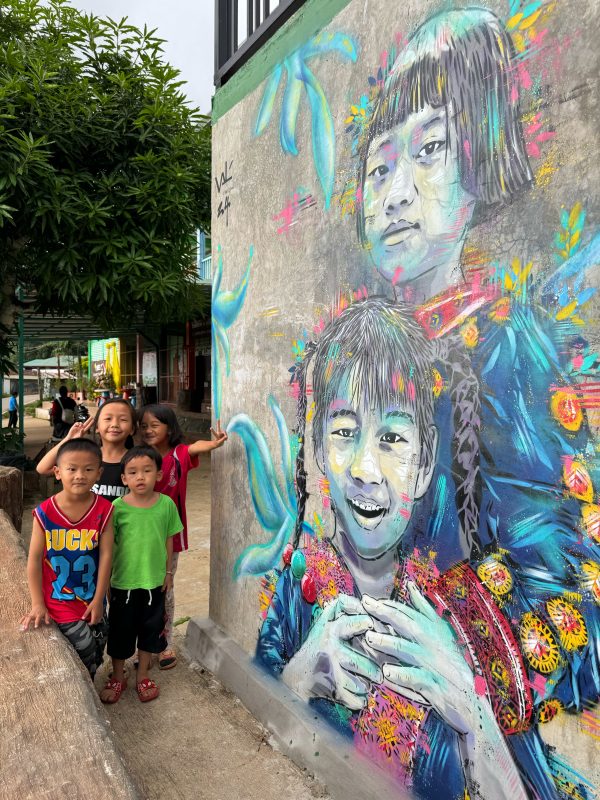
Valérian Lenud, also known as VALÉ, is a French visual artist and photographer whose work bridges the realms of urban art and documentary photography. Born in 1990, VALÉ has painted and photographed across the globe, using both mediums to explore themes of peace, cultural identity, and shared humanity.
Through his iconic street-art projects — Peacemakers and Inhabitants — he sheds light on global issues such as children’s rights, diversity, and heritage preservation. His vibrant stencil-based portraits appear on walls and in galleries from France to Mexico, Kenya to Thailand, always aiming to provoke reflection and inspire positive change.
As a photographer, Valérian captures intimate portraits and street scenes during his travels, immersing himself in the daily lives of the communities he meets. His camera becomes a tool for connection, a way to document the beauty, resilience, and stories of people from around the world. This body of photographic work often informs his murals and canvases, creating a powerful loop between observation and artistic expression.
Whether painting murals, cutting intricate stencils, or taking portraits in the field, VALÉ’s work is deeply human, celebrating the richness of cultures while inviting viewers to imagine a more compassionate world. His artworks and projects have been exhibited in cities including Paris, Melbourne, Mexico City, and New York, and featured in publications such as Forbes, StreetArt NYC, and C’est de l’Art.
Valérian continues to collaborate with galleries, festivals, social projects and local communities, blending activism and artistry to build bridges across borders, one image at a time.
↓↓↓
↓↓↓

Peacemakers
Peacemakers is a transversal project I have been developing over the last years, exploring how art can serve as a powerful tool for change, using the image of children acting as messengers of peace.
This project exists both in the streets around the world and on canvases for exhibitions, bridging activism and artistic expression. I have painted my Peace Soldiers in cities across four continents (including Australia, Thailand, France, and Mexico) and exhibited them in galleries in Paris, Melbourne, and Mexico City.
Each piece is a visual call for empathy, unity, and hope, portraying children not as passive figures, but as active symbols of resilience and peace. The project raises awareness around the need for action in times of crisis, whether social, political, or environmental, by inviting viewers to imagine a future shaped by compassion rather than conflict.
Peacemakers is not only an artistic series, but a statement and commitment to the idea that creativity can heal, unite, and inspire. It is my way of reminding the world that even the smallest voices can carry the greatest strength.

Inhabitants
Inhabitants is a long-term artistic journey that explores cultural identity, diversity, and shared human heritage through portraiture. Developed over several years and still ongoing, this project lives both in the streets and in the gallery, shaped by travel, human connection, and immersive experiences within communities across the world.
Each artwork is inspired by my encounters with local cultures – from the Maya in Mexico to the Maasai in Kenya, and the Hmong in Northern Thailand – and reflects a deep engagement with their traditions, daily life, and visual language. The portraits I create are a tribute to the richness of their adornments, garments, and expressions, which act as powerful symbols of identity.
Painted on walls in Argentina, Chile, Mexico, France, Australia, Thailand, Kenya, and more, these works seek to celebrate cultural diversity while inviting viewers to reflect on what unites us. The same spirit is carried onto canvas works, which have been exhibited in galleries in France, Australia, and Mexico.
More than just a series, Inhabitants represents a way of life, one that embraces art as a tool for exchange, storytelling, and respect. It’s about meeting people, listening to their stories, and allowing those stories to live on through public and shared space. At its core, the project is a reminder that our differences are our collective strength, and that heritage, when shared, becomes a bridge rather than a boundary.
